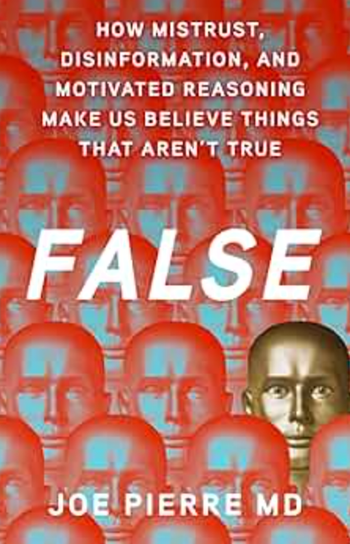
Into the Snake Pit: An Interview with Ben Harris, PhD
Two doctors discuss the controversial, highly debated film, The Snake Pit.
REEL INSIGHTS, HISTORY OF PSYCHIATRY
Over the decades, cinema has taken great interest in psychiatry, psychoanalysis, and psychotherapy. Film has served as one of the key ways by which the general public have come to view the work of clinicians. In this regard, one of the most influential films of the mid-20th century was The Snake Pit from 1948.
The film has been the subject of a great deal of scholarly debate and has been criticized for its portrait of its female protagonist, her fellow patients, and hospital staff. Ben Harris, PhD, has recently published an article in the journal History of Psychology entitled “The Snake Pit: Mixing Marx With Freud in Hollywood,” in which he uses archival sources to revisit the film’s making and reception.1 We took some time to discuss his findings.
Dr Harris is Emeritus Professor of Psychology at the University of New Hampshire. He has a doctorate in Clinical Psychology from Vanderbilt University and has held post-doctoral fellowships in the History of Science and Medicine at the University of Pennsylvania and the University of Wisconsin. His research interests include the role of Leftist politics in the history of psychology and psychiatry. In 2015, he was awarded a Lifetime Achievement Award by the Society for the History of Psychology.
First of all, can you provide a basic recap of the film?
The Snake Pit was an award-winning film that showed the hospitalization and recovery of Virginia Cunningham at an upstate New York psychiatric hospital. A confused but resilient young woman, Virginia progressed through various overcrowded, understaffed wards to Ward 1—the best. She then relapses and ends up in Ward 33—overflowing with the most disturbed patients. This seemed to her like a medieval snake pit, into which the mad were tossed to shock them into health. Realizing that she is healthier than the worst-off patients, Virginia gradually regains her sanity. She is aided by the saint-like Dr Kik, who uses ECT to connect with Virginia, followed by “narcosynthesis,” and psychotherapy informed by Freud. As her childhood fixations are unearthed and her transference to Dr Kik is resolved, Virginia comes to love her husband again, where before she had denied his existence. Throughout her hospitalization, Virginia connects with fellow patients who struggle with their illness and the uncertainties of the post-WWII era. Olivia de Havilland’s portrayal of Virginia Cunningham won an Academy Award nomination and landed her on the cover of Time magazine.
The film has received a good deal of criticism over the years. What have been some of the main points detractors have made about it?
Critics in Women’s Studies saw the women staff members in the psychiatric hospital as single and emotionally incomplete—propaganda that women would only find happiness and their true nature in marriage and home life. They also complained that the film gave the main character (Virginia) a Freudian complex that required a male therapist to help her resolve.
You make the point that at the time, however, viewers and reviewers of the film largely saw it quite differently. What did they generally take away from the film?
Mainstream critics saw it as emotionally gripping and recognized it as the first film to portray mental illness in a non-sensationalized form. Its overall impact was reflected by Time magazine putting Olivia de Havilland on its cover.
Despite the Freudian subplot, political progressives saw it as good propaganda for bettering the conditions of a neglected group of people: the mentally ill. Thus, the Communist Party’s West Coast daily said it was “a film achievement” that called for hospital reform rather than “new regiments of psychoanalysts.”
I think many people who have seen The Snake Pit are unaware that it was a novel before it was a film. You have delved into the life of its author, Mary Jane Ward. What can you tell us about her and how her own experiences informed both the novel and the film?
In both the film and Ward’s novel, Virginia rebelled against the bureaucratic rules and anti-therapeutic attitudes of many of the staff. She had a wicked sense of humor, and in the book, she was antiracist and a socialist—as Ward was in real life. In the book, she came to dislike the Freudian views of her therapist, while in the film she came to resolve her emotional problems through talking therapy.
In real life, conflict over giving a pacifist speech precipitated Ward’s first breakdown. Also, her relationship with her therapist reawakened unconscious conflicts over a boyfriend who had died. However, her therapist (who trained with Frieda Fromm-Reichmann) judged that she was psychologically too fragile to undergo talking therapy that would uncover repressed material.
One of the more intriguing things you did was to look at unpublished correspondence and drafts of the film’s screenplay, to get a fuller view of those involved in the production of the film. What did you learn by looking at these materials?
The correspondence shows how closely the screenwriters worked with prominent psychiatrists on the plot and its details. One can also see the political consciousness and solidarity that existed among Hollywood screenwriters, some of whom would soon be blacklisted.
My most stunning discovery was the last scene in the film, created by the screen writers, but replaced secretly by the producers. It showed Virginia to be socially conscious, pledging to continue the struggle for reform from the outside. This was replaced by a saccharine, antifeminist scene in which Virginia asks her husband to restore her wedding ring to her finger as they leave the hospital.
You note that 2 of the film’s screenwriters visited a state hospital and talked to staff and patients there. Do you have a sense of how this affected their approach to the project?
Building on the novel’s details, I think it helped them convey the sights and sounds of a huge, custodial institution in which keeping order was most important.
Based on what you have learned, you argue that—contrary to more recent criticism—the film was not intended to idealize conformity, but just the opposite. How so?
Consistent with the antifascist spirit of World War II, we see patients rebelling against authority that is arbitrary, such as the rule that no one in one back ward can step on “the rug.” Rather than accept the socioeconomic status quo, patients used humor to express their fears about the post-war economy and their post-hospital lives. Finally, in preparation for her discharge, Virginia hands off the care of a disturbed young woman that she has been looking out for to another fellow patient. This provided a collectivist touch that was the opposite of deferring to male physicians.
What do you see as the legacy of the film?
I began my research believing that it raised the consciousness of the public about mental illness. It took a New York Times obituary for Charles Schlaifler to make concrete the film’s direct impact on mental health policy and care. Schlaifler, who appears nowhere in the history of psychiatry, was a publicist at 20th Century Fox. He did the publicity for The Snake Pit and learned in detail the problems facing the mentally ill. He became an advocate for mental health reform in the 1950s, including greater funding for research. He used his publicist skills to become a highly effective Washington lobbyist and advocate, welcomed to Congressional hearings based on his work on The Snake Pit.
Dr Eghigian is professor of history at Penn State University. He specializes in the history of psychiatry and mental health and is member of the Psychiatric TimesTM Editorial Board.
Reference
1. Harris B. The snake pit: Mixing Marx with Freud in Hollywood. History of Psychology. April 22, 2021. Advance online publication.
Newsletter
Receive trusted psychiatric news, expert analysis, and clinical insights — subscribe today to support your practice and your patients.














